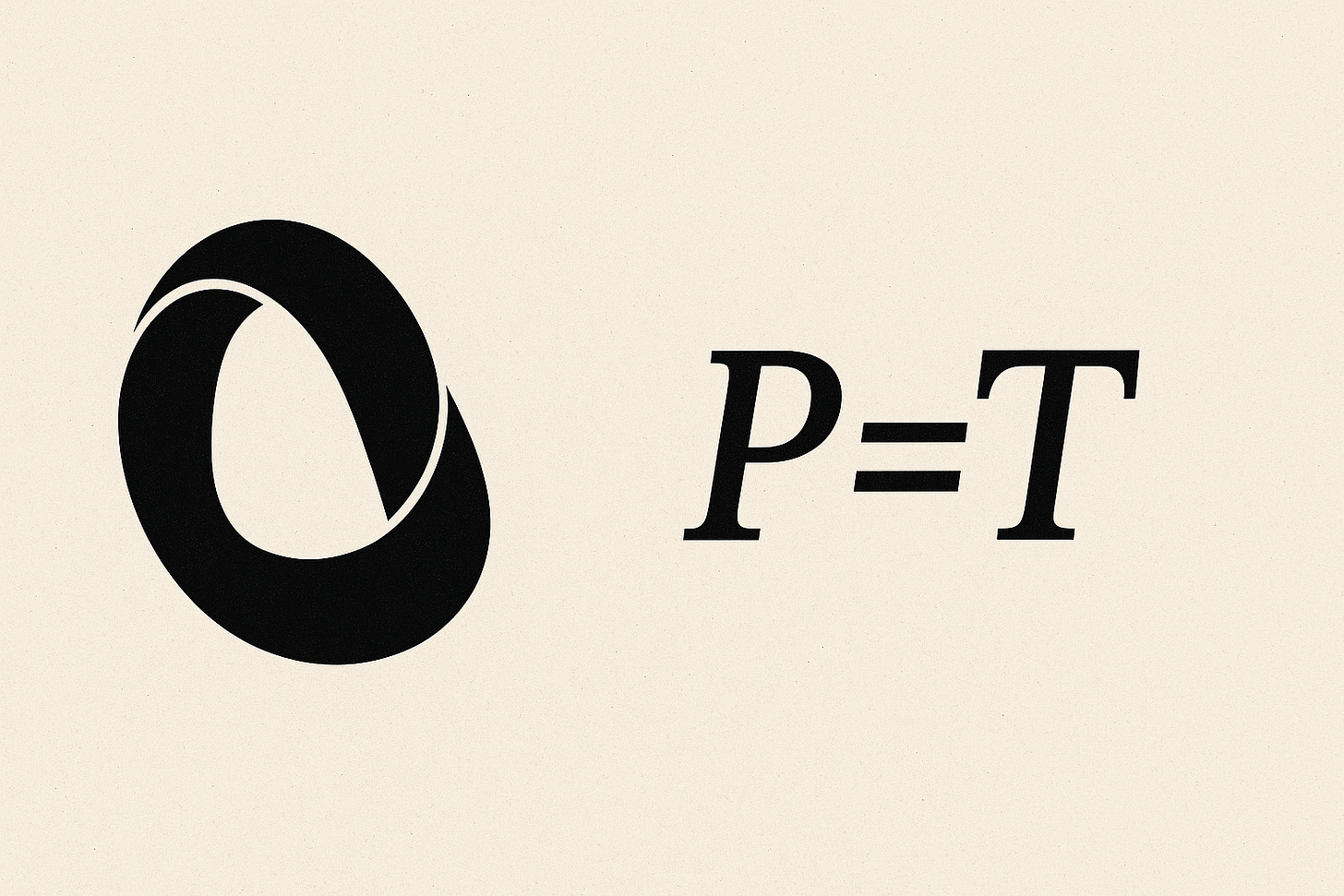Paradoxes are features of symbolic systems, not of the real world. By symbolic systems I mean rule‑governed frameworks that parse sequences of tokens (sounds, marks, bits) into structured expressions and then assign them meanings or evaluation statuses (e.g., truth‑conditions, probabilities, and proof status such as provable, refutable, or independent). Mathematics, the various logical calculi, and natural languages all fit this schema. By contrast, the “real world” itself contains no paradoxes. When paradox appears, it is a property of our representations within symbolic systems, not of reality.
Consider the familiar Cretan liar form: “I’m a Cretan and all Cretans always lie.” As an event in the world, the utterance is nothing more than a temporally ordered pattern of air‑pressure variations, a linear sequence of audio frequencies. There is nothing paradoxical about that physical signal. The contradiction emerges only after the sequence is processed by auditory perception, segmented into phonemes and words, and parsed by the language system’s grammar and semantics, which map it to propositions and then apply inference, pragmatics, and heuristics. The paradox, in other words, is an artifact of evaluations within the natural‑language symbolic system, not a feature of the underlying phenomenon.
This diagnosis is reinforced by variability across symbolic systems. Alter the rules for truth ascription, self‑reference, or quantification, and the “paradox” either dissolves or never arises. I strongly suspect there are actual (or at least possible) languages in which the Cretan formulation would not be flagged as paradoxical at all. That contingency underscores the thesis: paradox tracks the design of our symbolic systems, not the structure of the world.
None of this should be a surprise. Gödel’s incompleteness theorems, Turing’s halting problem, and work on computational irreducibility exhibit principled limits on completeness and decidability in sufficiently expressive formal systems. Symbolic systems are extraordinarily useful lenses on reality, but they are not reality itself.
The methodological upshot is straightforward. If an analysis of real‑world phenomena yields a paradox, treat it as a red flag about the analysis or the symbolic system, an indicator of an underspecified model, misapplied concept, or faulty idealization. Engineers treat anomalies as prompts to revise the design; philosophers and scientists should treat paradox the same way.
In short: reality furnishes sequences; symbolic systems build structures and assign values. Paradox lives in the latter, not the former.
A careful reader may object: “Aren’t symbolic systems (and their evaluations) also part of reality?” Yes. The point here concerns explanatory role, not ontological exclusion: paradoxes are failures within our representational machinery, not fractures in the world it represents. I will untangle that relation in a later piece.



Another perspective is that paradox indeed exists in reality, but in a truer form. In the land of maps and symbols, they get discretized as something frozen in time, where they thus appear undecidable, irreducible, uncomputable.
Gödel’s undecidable sentence and Turing's halting problem are grappling with recursion, where the object is folding in on itself, with no subject to mediate the tension. They can't properly represent these self-referential dynamics because they lack the temporal, processual dimension where such tensions actually play out.
In reality, we can't escape the paradox of lived experience. We just give them other names: dialectical tensions, double binds, antinomies, aporias, tragic conflicts, etc. These tensions aren't just present in human experience, but actually constitute it. We are the recursive subject trying to mediate our own objective nature, constantly folding in on ourselves.
Perhaps there are several categories of paradox, so this may not be what you are addressing at all. But that said, consider the case of a whole that is composed of many parts. Such an object may be said to be both "divided" and "united" at the same time. And so, we may adopt a third concept, such as a fractal or holarchy, to try to transcend the conceptual limitations of our former means of representation, and resolve the paradox. This third concept is clearly "more true" than either of the previous two concepts, taken in isolation. But is it more true than the previous two concepts when these are taken together, as in the form of a paradox?
In either case, a conceptual synthesis is involved. What paradox can allow, then, is the ability to view a higher level synthesis from a lower level perspective that (as yet) may lack a more developed conceptual toolset. Yes, paradox can be a "red flag" for us to address, with the awareness that this is a fundamentally inescapable feature of symbolic systems. We will likely always find ourselves at a lower level attempting to glimpse a "higher integral territory" by means of perpetually insufficient maps. Furthermore, this "map-territory paradox" may be a feature of reality that our maps can represent. (Which seems to be the counter-intuitive conclusion you've landed on here.)